The Standardbred horse is America’s fastest harness racing horse and the fastest in the world. This horse moves so fluidly that it would seem it was born for harness racing.
This unique breed has captured hearts around the world with its impressive speed and endurance.
Though it’s famous as the star of harness racing, a Standardbred’s abilities aren’t limited to the track. It shines both on the racetrack and in homesteads.
This breed profile provides all the information there is to know about this incredible horse breed for beginners and experienced horsemen alike.
So, read on, and get ready to fall in love with the Standardbred horse!
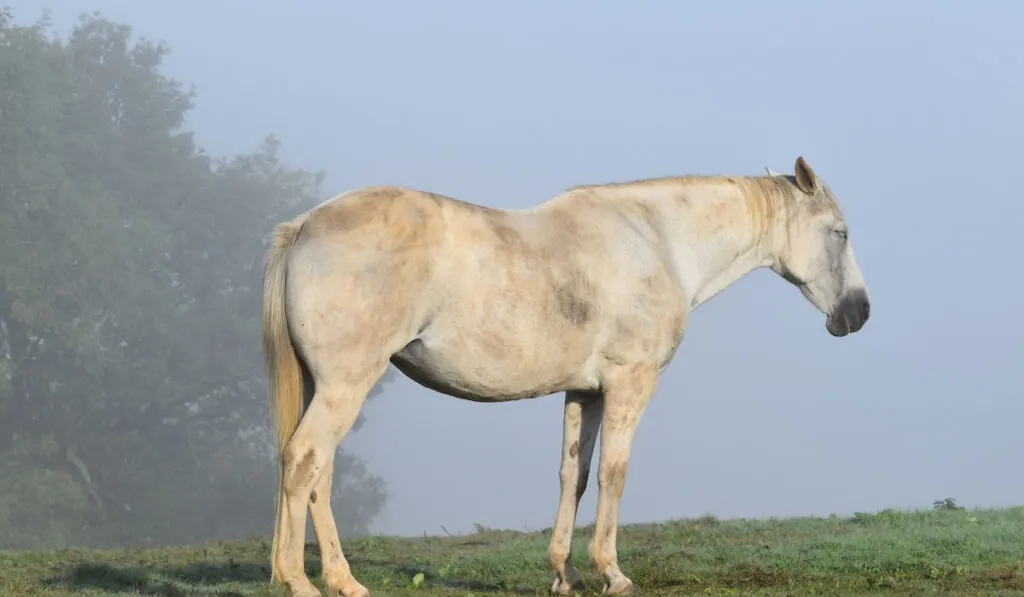
Table of Contents
History of the Standardbred Horse
The Standardbred horse was developed in the United States in the 19th century.
Its foundation bloodline can be traced to Messenger, a Thoroughbred foaled in the late 1800s.
Messenger was crossed with a Narragansett Pacer—a now-extinct American horse breed.
The resulting foal, Hambletonian 10, became the foundation sire of this breed.
Hambletonian 10 was crossed with another Thoroughbred and other horses, including the Morgan horse, the Hackney horse, the Norfolk Trotter, and the Canadian Pacer, which greatly influenced the Standardbred horse breed.
Standardbreds first became popular in the northeastern U.S., where they were used for racing on dirt tracks.
The first Standardbred horses could cover a mile in 2 minutes 30 seconds.
And as the breed evolved, later offspring trotted or paced a mile in less than 2 minutes — this is still a criterion for registering a horse as a Standardbred today.
The Standardbred was recognized as a distinct breed in 1879, and the National Association of Trotting Horse Breeders was founded in the same year.
This breed registry was succeeded by the U.S. Trotting Association (USTA), the breed registry to date.
Today, Standardbreds are used primarily in harness racing (pacing or trotting) and several other equestrian disciplines.
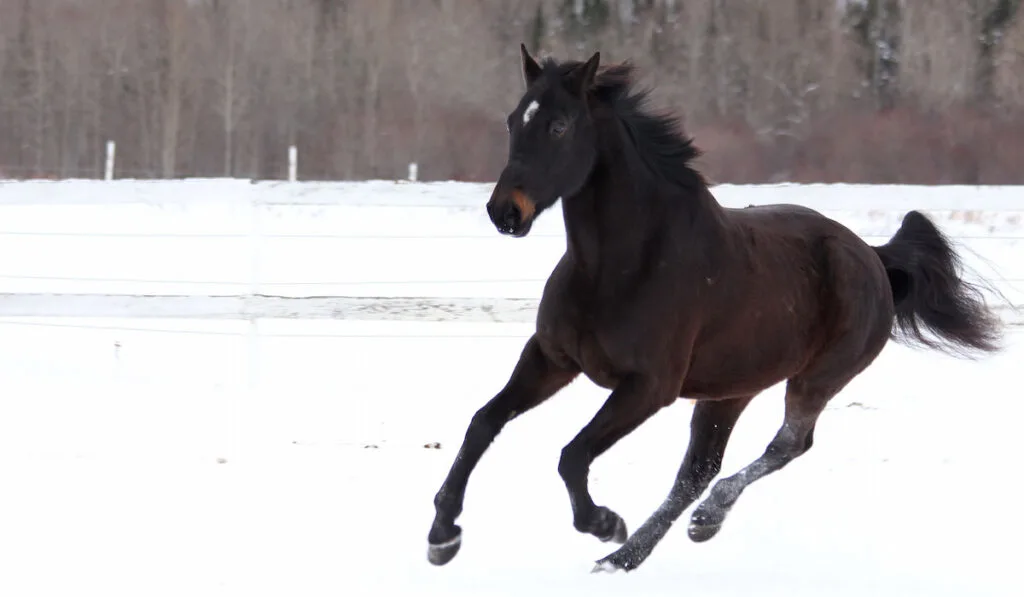
Breed Characteristics
Standardbreds are considered a medium-height, stocky breed. They are characterized by their versatility, athleticism, and intelligence.
The breed characteristics include the following aspects:
Height and Weight
These horses stand between 15–16 hands tall, their tallest point being their withers.
A Standardbred’s weight is between 1,000–1,320 pounds.
Conformation
Conformation describes the overall physical structure of a horse.
While assessing conformation, we look at the proportions of the horse and all the other parts put together.
Good conformation determines the soundness and productivity of an animal.
There are a few ways to assess good conformation, but the common way is to use the “ideal” body type as the template.
What is Considered Ideal for the Standardbred?
Head:
For the ideal Standardbred, the head is proportionate to the body frame.
A Standardbred’s head is refined, chiseled, and elegant.
It also sports a small muzzle, a shallow mouth, a straight and broad forehead, and large nostrils.
The ears stand pointed on top of the head, and the eyes are wide, clear, and expressive.
Neck:
The neck of this horse is long, elegant, and refined. It’s arched and thin and ranges from medium to long in length.
A Standardbred’s throatlatch is also nice and clean.
Body:
The body of a Standardbred can be compared to that of a powerful athlete: There are prominent and well-sculpted muscles that give this horse a polished look.
The chest is wide and deep, and the shoulders are sloping.
It has a short back, a long, high croup, and discernible withers.
Legs:
The Standardbred horse is gaited and has one of the finest legs among horse breeds.
The legs are solid and able to bear the weight of the horse.
They are also well-built and muscled, which is a plus for the high-energy racing this animal does.
The hooves are solid and resistant to chaffing and chipping.
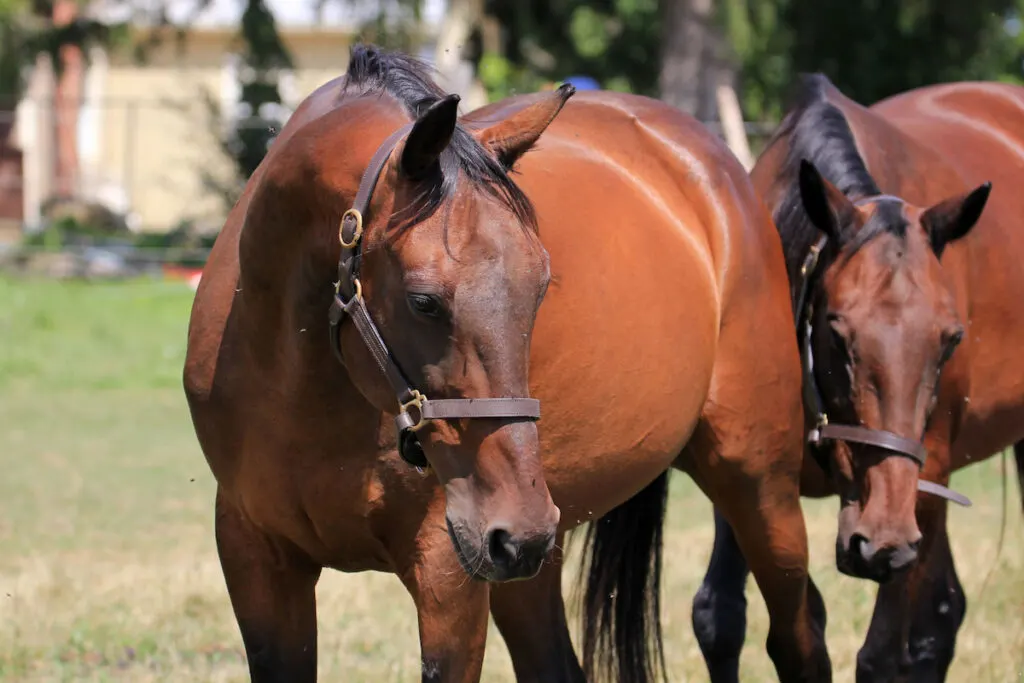
Temperament
Standardbreds are gentle, calm, and loyal horses. They are known to be people-oriented and easy to train.
Many describe these equines as “bombproof” — they’re often used in the military and even in movies.
Standardbreds thrive in human company and are great for beginners.
Standardbreds are also intuitive, competitive, and resilient. Their calm, easygoing attitude does not affect their competitive nature.
Lifespan
Standardbred horses have an average lifespan of 30–35 years.
If you own or intend to get one, you’re getting a horse that’s sure to be around till you’re old and gray.
Colors
These equines come in a variety of colors. The colors include
- Bay
- Chestnut
- Brown
- Black
- Gray
The most common colors are bay, brown, and black. Other rare breed colors are roan, pinto, and white.
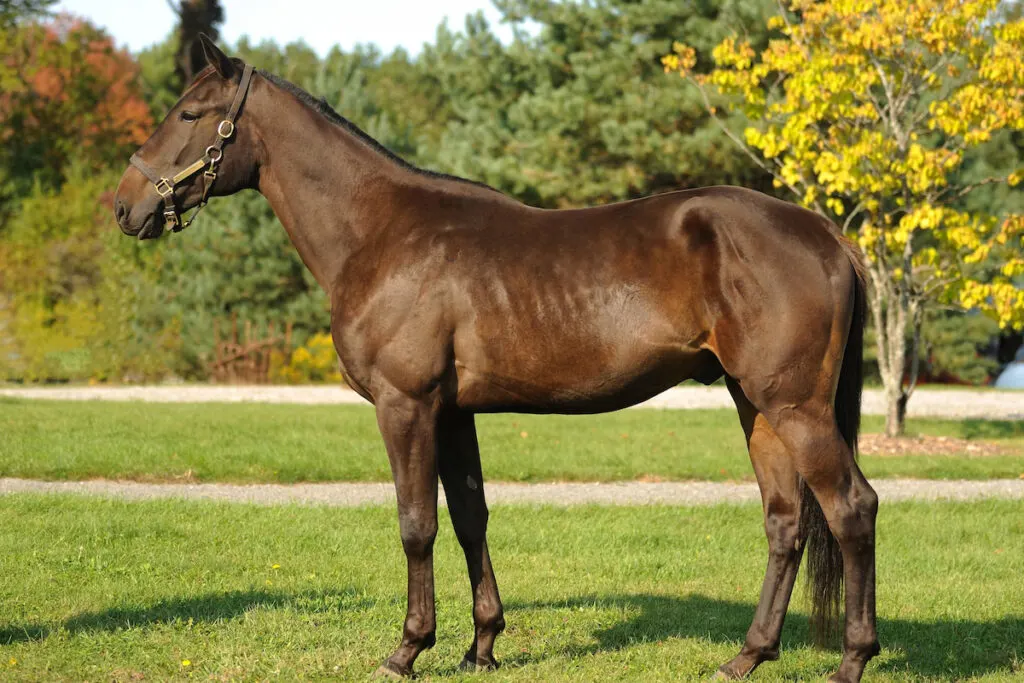
Breed Association
The USTA is primarily responsible for
- Promoting and protecting the interests of the breed.
- Improving the quality of Standardbred horses through registration, inspection, and certification programs.
- Supporting research initiatives aimed at improving the breed’s quality, health, and welfare.
- Providing educational resources for owners and prospective owners of Standardbreds and working to increase awareness of the breed.
- Licensing, registering, and certifying horse owners.
- Increasing awareness for harness racing.
Racing Standardbred Horses
Standardbreds are classified into two: pacers and trotters.
Most races are either for pacers or trotters, so it’s important to know which category your animal falls into.
Pacers, also called sidewheelers, are Standardbreds that move their legs in a two-beat lateral gait.
They move both legs on the same side of their body simultaneously, i.e., the left hindlimb moves with the left forelimb, and the right hindlimb moves with the right forelimb.
Conversely, trotters have a high-stepping gait and move their legs in diagonal pairs.
They move their legs in unison in an alternating fashion, i.e., the left forelimb moves with the right hindlimb, and the right forelimb moves with the left hindlimb.
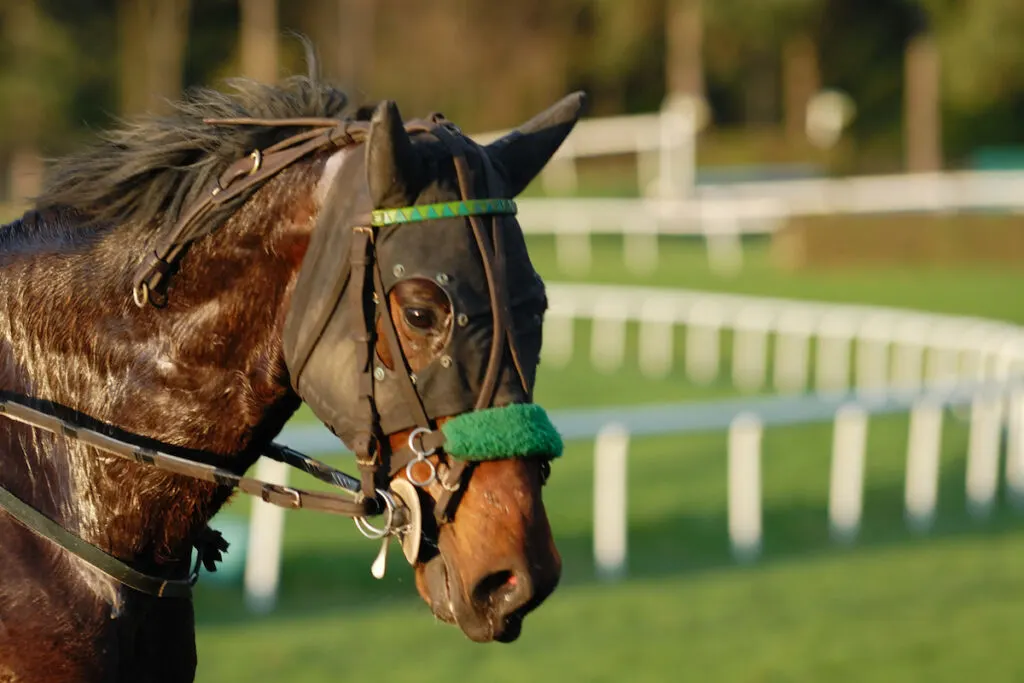
Both trotters and pacers have been used for harness racing and have their own world records.
The fastest record time for a trotter is 1:49:76, while the fastest record for a pacer is 1:46:87.
Some pacers are known to be able to trot, and some trotters are also able to pace; however, for both types, their preferred racing movement is what classifies them as pacers or trotters.
The ability to pace or trot is influenced by a DMRT3 (Gait keeper) gene, which causes a point mutation that affects their gait.
Pacers are generally faster than trotters and are required to wear special shoes during races to protect their hooves and improve traction on the racetrack.
You’ll need a farrier to ensure your horse’s shoes fit properly and meet the racing requirements.
Standardbred Horse Health
These beautiful horses are a hardy breed, but like every other species, they are susceptible to health problems.
The most common disease conditions associated with this breed are respiratory diseases and musculoskeletal diseases.
Musculoskeletal diseases
Being racehorses, Standardbreds exert a lot of energy compared to other breeds, which often takes a toll on their body.
They can suffer from muscle-wasting diseases or ligament failure as a result of pulling the harness around.
Respiratory diseases
Standardbreds can also suffer from upper or lower respiratory abnormalities like exercise-induced pulmonary hemorrhage.
This condition can be characterized by shortness of breath, coughing, or wheezing and can lead to more complicated issues if left untreated.
Regular checkups with your veterinarian will ensure that these disease conditions are prevented or caught early enough and treated before they cause any problems for your horse.
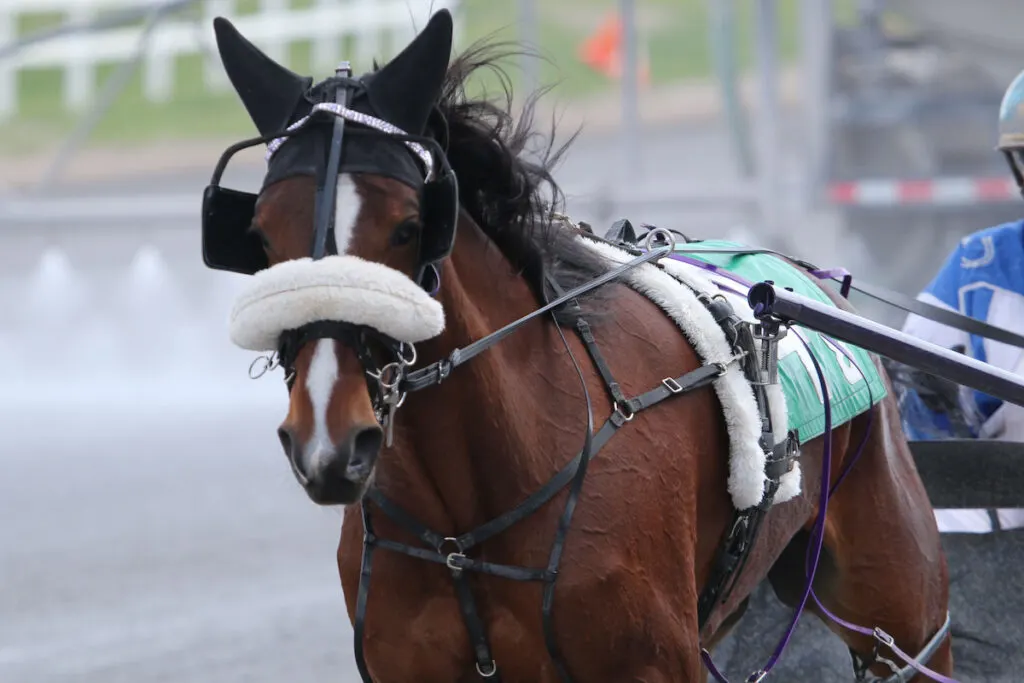
Uses of Standardbred Horses
These horses are one of the most versatile horse breeds and have three of the most important qualities of a horse — speed, stamina, and gait. These traits put them at the center of most equestrian disciplines.
They are recognized as the world’s fastest harness racing horses and also excel in other disciplines like dressage, pleasure riding, and endurance.
They are also used in other disciplines like Western riding, trail riding, driving, fox hunting, and equine-assisted therapy.
Standardbreds excel at show jumping and are considered one of the best breeds for this sport.
A number of Standardbreds have proven the breeds ability to excel in show jumping, including an ambassador for the breed — Merlin — who jumps cross-country with his owner.
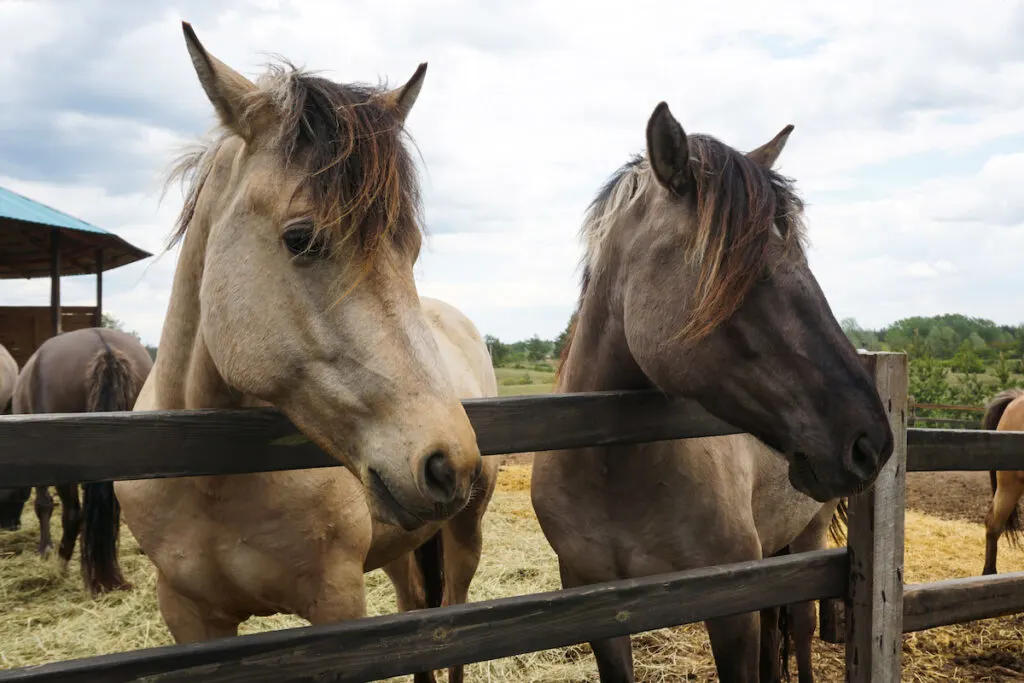
Standardbreds vs. Thoroughbreds
Although the Standardbred was developed from the Thoroughbred line, these horses are significantly different.
The notable differences include the following:
| Characteristics | Standardbreds | Thoroughbreds |
|---|---|---|
| Height | 15–16 hands | 15.2–17.0 hands |
| Weight | 1,000–1,320 lbs. | 990–1,100 lbs. |
| Uses | Harness racing, dressage, jumping, driving, and equine-assisted therapy | Racing, dressage, polo, fox hunting, jumping |
| Build | Well-muscled, heavy | Lean, smaller, and lighter |
Standardbreds have a refined head with a broad forehead, unlike Thoroughbreds who have long, pointed heads.
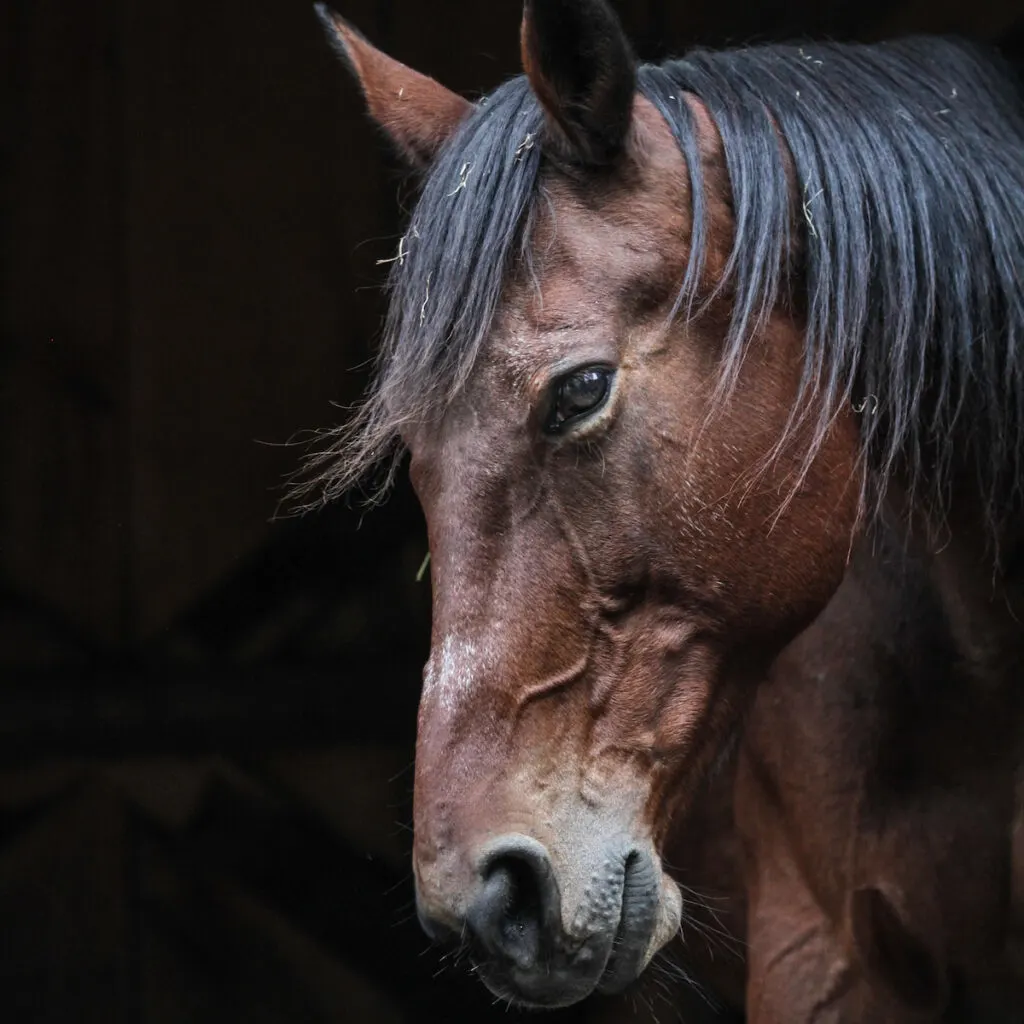
Criticisms of the Standardbred Horse Breed
While most people adore these beautiful horses, some criticize them. Some criticisms include the following:
Their Conformation and Size
Some people consider Standardbreds to be too heavy or stocky and believe their size affects their speed and ability to jump.
Their Health
There are also concerns about the health of the breed, as they are believed to be susceptible to orthopedic and respiratory diseases.
Conclusion
The Standardbred horse is a unique horse breed with its own traits and qualities that set it apart from other horse breeds.
With its kind temperament, eagerness to learn, and excellent work ethic, this horse is sure to make a wonderful addition to any equine herd.
Resources
- https://www.deephollowranch.com/average-horse-weight
- https://www.ustrotting.com/about.cfm
- https://www.equinewelfaresociety.org/post/standardbred-get-to-know-your-equine-breeds
- https://www.helpfulhorsehints.com/the-thoroughbred-horse-breed-profile/
- https://www.differencebetween.com/difference-between-thoroughbred-and-vs-standardbred/
- https://www.equinewelfaresociety.org/post/standardbred-get-to-know-your-equine-breeds
- https://horsesonly.com/standardbred-horse/
- https://www.thesprucepets.com/meet-the-american-standardbred-1886139
- https://en.m.wikipedia.org/wiki/Standardbred
- https://www.sciencedirect.com/science/article/abs/pii/S1871141315001535

